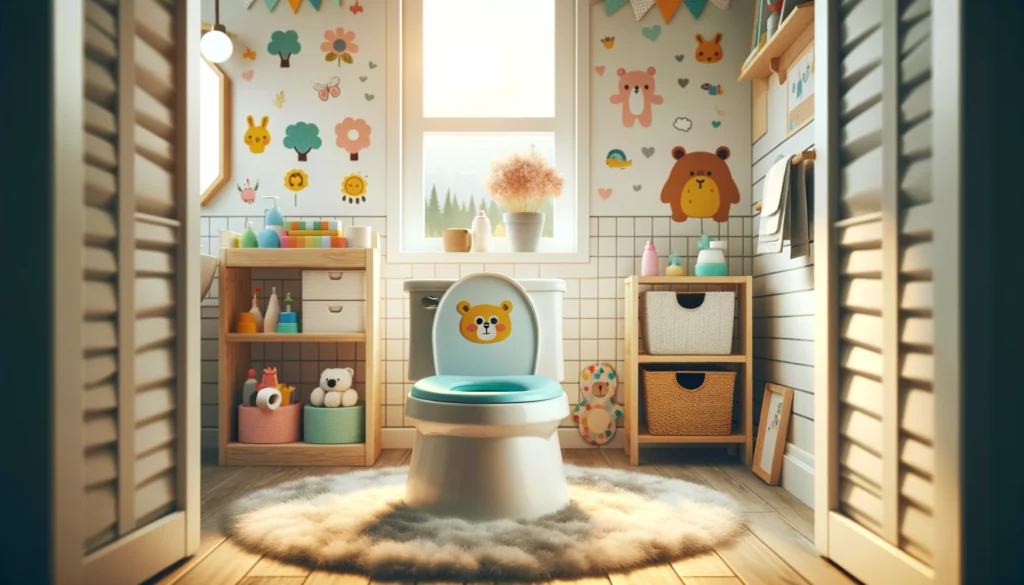Potty training sparks a mix of excitement and anxiety for parents eager to bid farewell to nappies. Yet, the journey towards a nappy-free existence hinges on recognizing the pivotal signs indicating your child is truly prepared for potty training. Rushing this milestone might result in setbacks, making it essential to await the telltale cues of readiness for potty training.
The elusive “right age” for potty training remains a mystery. Each child dances to their own rhythm. Typically, around the age of two or two and a half, most children exhibit signs of readiness, with girls often taking the lead. To spot these readiness indicators, keep an eye out for:
✅ Regular Bowel Movements or Extended Periods of Dryness
Recognizing your child’s readiness for potty training involves observing their bowel habits. When your little one maintains consistent bowel movements or experiences extended periods of dryness, it indicates a level of physical readiness for potty training. Noticing these patterns signifies that their bladder and bowel muscles are gaining control, a crucial aspect for successful potty training.
✅ Display of Curiosity and Interest in Using the Potty

Your child’s curiosity and interest in the potty serve as strong signals of readiness. When they begin asking questions about the toilet or display a keen interest in watching you or older siblings use the bathroom, it showcases a natural inclination toward understanding this new concept. This fascination sets the stage for a smoother transition.
✅ Signalling When Their Nappy Needs Changing
A clear indicator of readiness is when your child starts communicating their discomfort with a soiled or wet diaper. Whether they verbalize it, point it out, or show signs of discomfort when wearing a dirty nappy, this signaling demonstrates an awareness of bodily sensations, a crucial step towards independence in managing their toileting needs during potty training.
✅ Grasping Basic Bathroom-Related Language
Understanding and using basic bathroom-related language is a pivotal sign of readiness. When your child starts recognizing or using terms like “potty,” “pee,” “poop,” or expresses an interest in understanding where these bodily functions occur, it reflects their growing comprehension of bathroom-related concepts. This comprehension lays the groundwork for effective communication during the process.
These four key signs provide a comprehensive glimpse into your child’s readiness for potty training, guiding you toward a smoother and more successful transition from diapers to the potty.
The essence lies in independence for success. When your child can follow simple instructions like “Let’s use the potty,” they are likely ripe for this developmental leap. Additional cues to observe include:
👖 Ability to Manage Clothing for Potty Training (Pulling Pants Up or Down)

One of the essential physical skills indicating readiness for potty training is your child’s ability to manage their clothing. When they can independently pull their pants up or down, it demonstrates a level of motor skills and coordination necessary for navigating the process. This skill empowers them to participate actively and reduces dependence during bathroom trips.
👨👩👧👦 Imitating Family Members’ Bathroom Behaviours
Children learn by observing and imitating, and when they start imitating family members’ bathroom routines, it signifies readiness for potty training. Whether they mimic flushing the toilet, washing hands, or showing interest in the steps involved in using the bathroom, this emulation highlights their readiness to adopt similar behaviours and routines.
🔍 Curiosity About Bathroom Routines
A curious mind is a wonderful sign of readiness. When your child begins showing interest in bathroom-related activities, such as asking questions about the toilet, observing others’ bathroom behaviours with fascination, or demonstrating an eagerness to understand the process, it signals a genuine curiosity and receptiveness to learn about the bathroom routine for potty training.
🌟 Desire for Autonomy and Orderliness in Potty Training
As toddlers grow, so does their desire for independence and orderliness, significant for readiness. When your child expresses a preference for organizing their toys or displaying a desire for autonomy in various activities, it signifies readiness . This desire for control and order sets a positive tone for embracing the responsibility of using the potty.
🧼 Enjoyment in Maintaining Hygiene
A child’s enjoyment in practicing hygiene habits is a strong indicator of their readiness. When they take pleasure in washing their hands, enjoy cleaning up spills, or exhibit enthusiasm for maintaining cleanliness, it showcases a positive attitude towards hygiene practices, a crucial aspect of successful potty training.
😊 Eagerness to Please
Children often exhibit a desire to please their caregivers. When your child shows eagerness to comply with
Dive deeper into potty training by clicking: “Toddler Potty Training : Step by Step Guide”, where you’ll learn EVERYTHING you need to know.
Follow us

Pingback: Baby Sleep Safety: A Parent's Guide to a Secure and Comfortable Nursery - Purple Bees Child Care